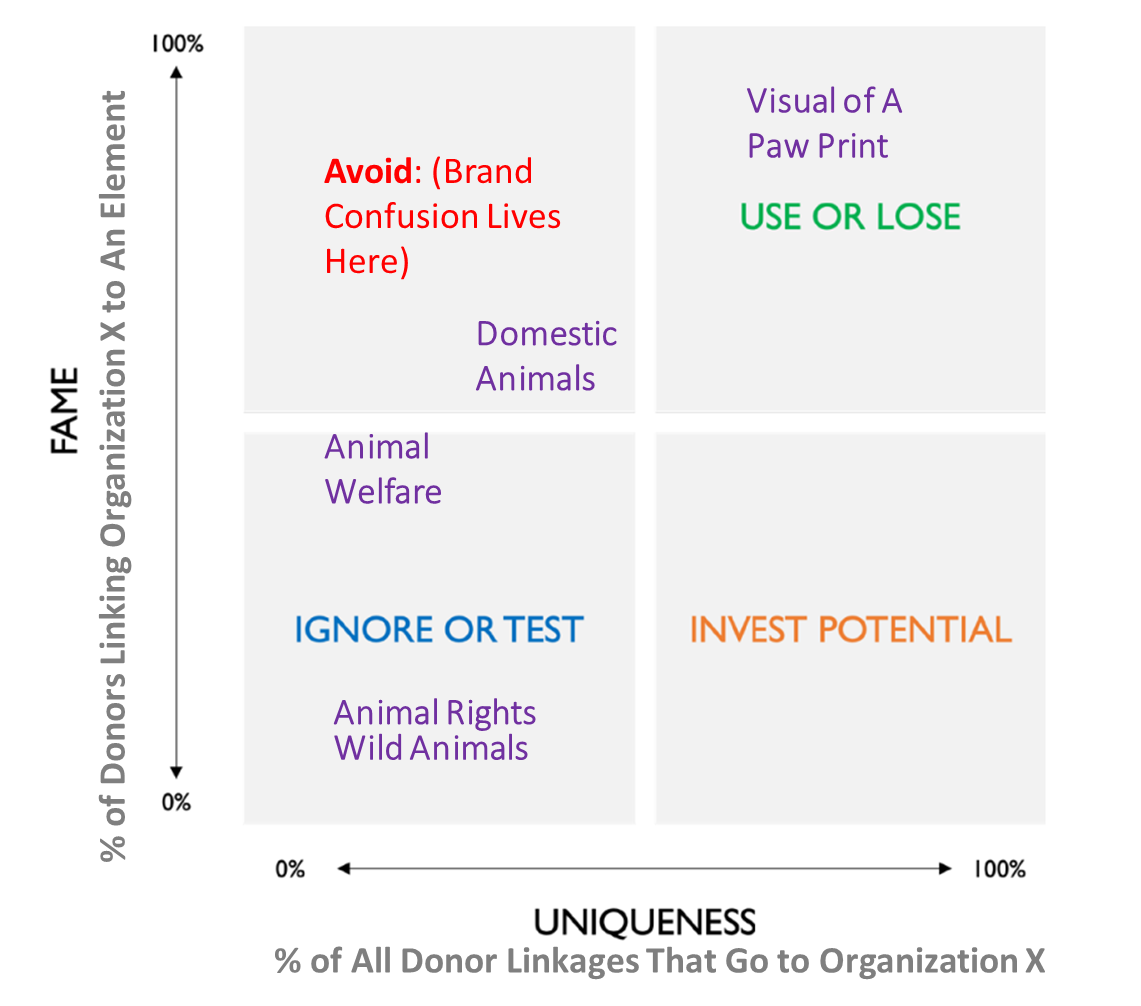Is Your Brand Famous and Unique?
Half of brand ads are mistaken for competitor brands per LinkedIn research. A thought exercise:
- Imagine removing your logo and brand name from your appeal. Would any donor know it was from your organization? Is there anything uniquely you after removing your mark and name? How many other charities are likely to be mentally associated with what you do and who you help?
The data is clear and sobering on your growth prospects:
- Only 10-15% of charities reach $1 million in annual revenue
- That figure falls to 5% for hitting $5 million
- And you are staring at a 99% failure rate if your aim is 50mil or more
And even more daunting, you likely don’t have a sizeable marketing and advertising budget. This means your fundraising spend has two jobs, raise money now and build brand for tomorrow. And since the group giving money today is infinitely smaller than the group that could give tomorrow, the brand building is the far more important job for growth.
But it’s possible to thread the needle and do what we call BrandRaising; raising money and building brand with the same spend. What’s impossible is growing with fundraising that is unmemorable and non-unique and 100% generic save for your logo and name.
And contrary to popular opinion, building a brand doesn’t require being fully differentiated with a unique value proposition. Having that is awesome but it’s highly unusual and fortunately, unnecessary.
Instead, building your brand is about creating what I call sticky awareness whereby your fundraising creates a network of mental associations. One key to pulling this off is going beyond name and logo to incorporate brand elements, which are non-name cues such as audio, mascots, strapline, brand message, font, color…and those are listed roughly in order of effectiveness. Said differently, a brand element is a generic thing you make non-generic over time.
Brands with strong memory associations grow twice as fast. Can your organization forgo this upside? The odds of growth per the data suggest not.
There are two metrics for brand element success – Famous and Unique (nod to Ehrenberg-Bass Institute for these terms and grid).
- Famous is the % who associate your brand with the Element.
- Unique is the % of total associations with that Element that your brand garners.

DonorVoice conducted brand research for Organization X, a group in the animal welfare space. This organization has high association with a visual paw print (Y axis) and most of the paw-to-brand associations are with their brand versus the competitors. In contrast, this brand has low association with the animal rights positioning and most of the total associations with this message go to competitors (X axis).
Yes, this brand is reasonably famous on animal welfare and domestic animals but that is where confusion reigns and as a smaller org, it’s highly likely that fundraising with sad puppies being mistreated will raise a few bucks and build brand…for the competition.
How does this work in practice? What charity comes to mind when your brain reads this next word, panda.
The WWF panda is a brand element that is famous and unique but it didn’t start out that way. And for the first 25 years of its existence the panda wasn’t interlocked with the name as part of the logo. 
How did it come about? WWF’s founders said the “black and white coat felt distinctive and…we also wanted an animal that had an impact in black and white to save money on printing costs.”
Practical, heuristic choices applied consistently over time led to incredibly high,
- Fame – percentage of donors that link the panda to WWF
- Uniqueness – the percentage of total brand to panda linkages that go to WWF
There’s an awful lot that went into WWF becoming a huge, global brand having nothing to do with the panda and the broader brand identity. In fact, all the other stuff is way more important overall. But winning and growing is a multi-faceted, hard as hell challenge.
Leaving your version of the panda off the table because nobody is thinking about brand or thinking about it correctly ain’t gonna help.
Kevin


